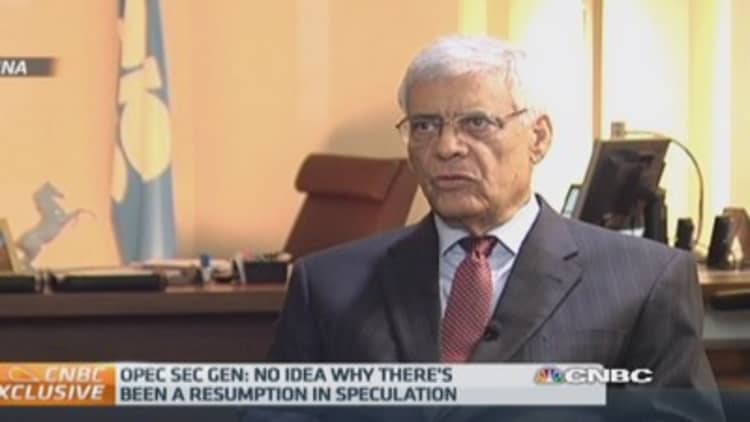U.S. crude futures settled higher on Friday, capping off a bearish week with a rally driven by in part by concerns about a collapse of the Ukrainian ceasefire and forecasts of unseasonably cold temperatures in the U.S. Midwest.
The Ukrainian military accused Russia of sending 32 tanks and truckloads of troops across the border, which if true would signal an end to the lull in violence between the two countries. Renewed fighting in the region could disrupt oil flows, throttle supply, and drive worldwide prices up.
Read MoreCoulda strong dollar derail Wall Street's rally?
However, some traders are skeptical that another flaring of violence in the region could affect supply and prices.
"There's not been a single supply disruption from the Ukraine situation in the past four, five months, though this time around it remains to be seen," said Tariq Zahir of Tyche Capital Advisers.

U.S. crude ended the session 74 cents higher at $78.65 a barrel, having dropped from a high above $107 five months ago.
futures were last up 0.7 percent at $83 a barrel. The benchmark hit a four-year intraday low of $81.63 on Wednesday, down from a high above $115 in June.
Read MoreDrilling chief calls bottom on U.S. oil
U.S. job growth increased at a brisk clip in October and unemployment fell to a six-year low of 5.8 percent, but missed analyst expectations for even stronger jobs growth.
"It all speaks to the story that the U.S. can sustain pretty strong growth," said Jeff Greenberg, a senior economist at JP Morgan Private Bank in New York.
The retreated from its strongest level against a basket of foreign currencies in over four years, helping to ease some of the pressure on dollar-denominated oil benchmarks.
Read MoreOil price falls? Why you should relax: OPEC head
Frigid forecasts for the U.S. Midwest driven by a polar vortex in the next two weeks boosted the market for heating oil, indirectly boosting demand for crude oil which can be refined to heat homes.
Increasing supplies of crude oil from North American shale formations have weighed heavily on prices this year, creating a glut in world markets and decreasing demand for oil from the Organization of the Petroleum Exporting Countries.
OPEC forecast on Thursday that its market share would be 5 percent smaller by 2018 as shale supplies continued to increase faster than demand.
But OPEC Secretary-General Abdullah al-Badri said the 12-member cartel, which pumps a third of the world's oil, was not panicking and thought prices would recover next year.
Read More
"I think the price will rebound by the second half of next year. But I don't know by how much. This situation of low prices cannot continue," Badri said after announcing the publication of the group's 2014 World Oil Outlook.
OPEC ministers will meet in Vienna on Nov. 27 to discuss how to react to falling oil prices and could decide to trim production.

